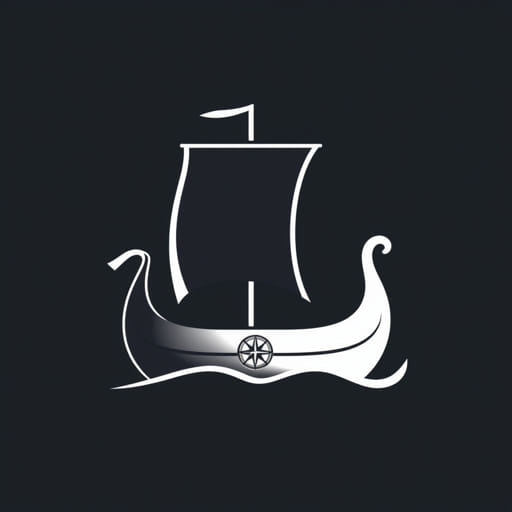What Did Leif Erikson Discover
Long before Christopher Columbus set sail toward the Americas, a Norse explorer named Leif Erikson made a daring journey across the Atlantic Ocean that would lead him to uncharted territories. Leif Erikson, the son of Erik the Red, is often celebrated as the first European to set foot in North America, around the year 1000 AD. His voyage, filled with courage and curiosity, led to the discovery of a region he called ‘Vinland,’ believed to be part of modern-day Newfoundland in Canada. His journey marked a pivotal moment in the history of exploration and Norse navigation.
Leif Erikson’s Background
Leif Erikson was born in Iceland around 970 AD and later moved to Greenland with his father, Erik the Red, who had established a Norse settlement there after being exiled from Iceland. Leif grew up surrounded by tales of exploration and survival in harsh new worlds. As a young man, Leif was known for his strong character and adventurous spirit, traits that would serve him well in his seafaring journeys.
Influence of Erik the Red
Leif’s father, Erik the Red, had successfully founded the first Norse settlements in Greenland. These colonies were vital stepping stones for later expeditions, including Leif’s voyage westward. The harsh environment of Greenland also instilled resilience in Leif and his fellow Norsemen, preparing them for the unpredictable conditions of the North Atlantic.
The Voyage to Vinland
Leif Erikson’s discovery of new lands was not entirely accidental. According to Icelandic sagas, he may have heard tales from other Norse sailors like Bjarni Herjólfsson, who had glimpsed unknown lands west of Greenland but had never landed. Motivated by these accounts, Leif set sail with a crew of about 35 men.
Crossing the Atlantic
The journey from Greenland to North America was treacherous, involving icy waters, unpredictable weather, and the threat of running out of supplies. However, Leif and his crew were experienced sailors and navigators. After days at sea, they first encountered a land covered with flat stones, which they named Helluland, likely Baffin Island. Then came a forested region they called Markland, believed to be Labrador.
Arrival in Vinland
The most significant part of Leif Erikson’s journey was his arrival in a fertile and mild land he named Vinland. Scholars generally agree that Vinland corresponds to the northern part of Newfoundland, particularly the site known today as L’Anse aux Meadows. The land was rich with natural resources, including timber, fish, and wild grapes hence the name Vinland, or ‘Wine Land.’
Settlement and Exploration
Leif and his crew built temporary shelters and explored the surrounding areas during their time in Vinland. The settlement included sod houses and storage buildings, suitable for surviving the harsh winter. The sagas mention interactions with indigenous peoples, whom the Norse referred to as Skrælings. Although these encounters were initially peaceful, they later turned hostile in subsequent Norse voyages.
Duration of the Stay
Leif Erikson and his men stayed in Vinland for one winter before returning to Greenland. Although the exact length of their exploration is uncertain, the brief stay demonstrated the feasibility of transatlantic voyages long before Columbus.
Historical Significance
Leif Erikson’s discovery holds immense historical value as it represents the first known European presence in North America. His journey proves that the Norse were advanced navigators capable of crossing vast ocean distances using primitive tools and methods.
Archaeological Evidence
In the 1960s, archaeologists Helge and Anne Stine Ingstad discovered the remains of a Norse settlement at L’Anse aux Meadows, providing strong evidence of Norse presence in North America around the year 1000. The site aligns with descriptions from the Norse sagas and confirms Leif Erikson’s legacy as a trailblazer.
Legacy of Leif Erikson
Although overshadowed in popular history by figures like Columbus, Leif Erikson has received increasing recognition for his achievements. In the United States, Leif Erikson Day is celebrated on October 9th to honor his contributions to exploration.
Inspiring Future Explorers
Leif’s voyage inspired other Norse explorers, including his brothers Thorvald and Thorstein, to continue expeditions to Vinland. Though the Norse did not establish permanent colonies in North America, their explorations paved the way for future transatlantic travel.
What Leif Erikson Discovered
- Helluland A land covered with flat stones, likely modern Baffin Island.
- Markland A forested region, possibly the Labrador coast.
- Vinland A fertile area with mild weather and wild grapes, identified as part of Newfoundland.
- New Resources Timber, fish, and wild plants not found in Greenland or Iceland.
- New Peoples Early interactions with indigenous inhabitants of North America.
Unique Contributions
Leif Erikson’s discoveries stand apart from those of later European explorers because his journey occurred centuries earlier and relied solely on Norse shipbuilding and oral navigation traditions. His voyage was not driven by empire-building or conquest but by curiosity and the need for better lands.
Leif Erikson’s discovery of Vinland reshaped the boundaries of medieval exploration. His journey demonstrated that the Norse had the maritime skill and courage to reach the unknown shores of North America. Although their presence was short-lived, it remains a testament to human curiosity and the timeless desire to explore new horizons. Today, Leif Erikson is rightfully honored as a pioneer of transatlantic discovery, and his story continues to inspire both historians and adventurers alike.
